Iran Claims To Have Developed A Hypersonic Missile
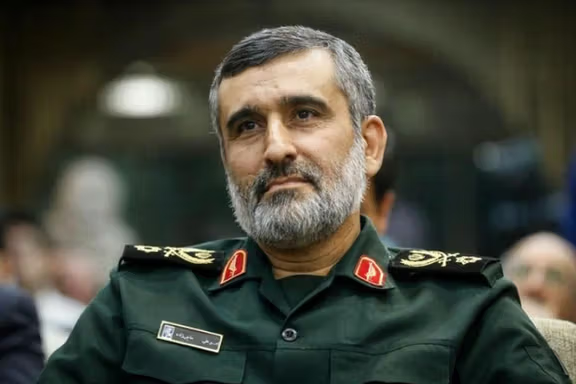
Iran has built a hypersonic ballistic missile, the Revolutionary Guard’s aerospace commander claimed Thursday, in remarks likely to heighten concerns about Iran’s missile program.

Iran has built a hypersonic ballistic missile, the Revolutionary Guard’s aerospace commander claimed Thursday, in remarks likely to heighten concerns about Iran’s missile program.
"This missile has a high speed and can maneuver in and out of the atmosphere. It will target the enemy's advanced anti-missile systems and is a big generational leap in the field of missiles," commander Amir-Ali Hajizadeh was quoted as saying.
Hypersonic missiles can fly at least five times faster than the speed of sound and on a complex trajectory, which makes them difficult to intercept. So far, only Russia, Iran's close military ally, has developed such weapons.
However, there have been no reports of such a missile being tested by Iran and, while the Islamic Republic has developed a large domestic arms industry in the face of international sanctions and embargoes, Western military analysts say Iran sometimes exaggerates its weapons capabilities.
Concerns about Iran's ballistic missiles did however contribute to a US decision in 2018 under then-President Donald Trump to pull out of the nuclear pact that Tehran signed with world powers on 2015.
Last week, Iran said it tested the Ghaem 100, its first three-stage space launch vehicle, which would be able to place satellites weighing 80 kg (180 pounds) in an orbit 500 km (300 miles) from the earth's surface, according to state media.
The United States has called such actions "destabilizing" as it believes space launch vehicles could be used to transport a nuclear warhead.
With reporting by Reuters
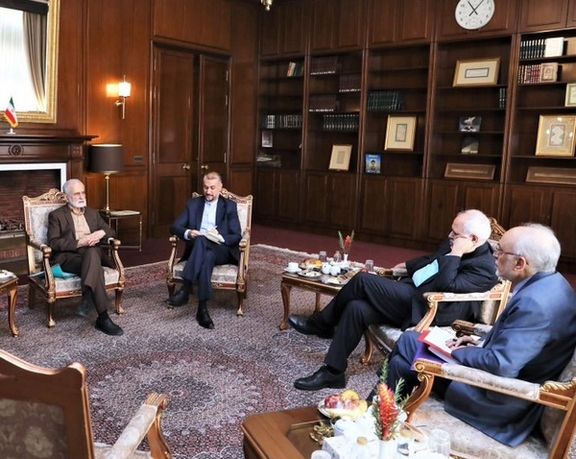
Iran’s Foreign Minister Hossein Amir-Abdollahian says he held a meeting with his four predecessors, including Mohammad Javad Zarif, without disclosing any details.
In a tweet late on Wednesday the Iranian top diplomat said, “in a friendly meeting I hosted the former foreign ministers of the Islamic Republic of Iran Kamal Kharazi, Manuchehr Mottaki, Ali Akbar Salehi and Mohammad Javad Zarif.”
Further he added that “We are determined to accomplish the objectives of the diplomacy in realizing the greatest interests of the nation by relying on collective wisdom.”
However, Amir-Abdollahian did not mention anything about the agenda of the meeting and the issues raised.
Some Iranian dailies, however, called the meeting “an urgent” one not giving any other details.
The meeting comes as negotiations to revive 2015 nuclear deal are in a deadlock, with the United States openly stating that the talks are not its focus at the moment.
The recent protests that have swept the country are having an undisputable impact on the chances of the revival of the JCPOA as it is getting more difficult for Washington and the West to negotiate with the Islamic Republic when anti-regime demonstrators are subjected to a brutal cracked down in the streets.
The United States and its European allies have warned Tehran to respect fundamental human and civil rights of the protesters and are threatening more sanctions.
It seems that the incumbent minister is seeking help from his predecessors to get the regime out of the impasse, but major policies in Iran are set by Supreme Leader Ali Khamenei.

Russia’s use of military drones in Ukraine has highlighted the ready availability of the low-cost weapons and their growing use in conflicts.
Quebec-based Bombardier Recreational Products (BRP) has expressed surprise that engines made by Rotax, its Austrian subsidiary, were reportedly found in Iranian-made drones shot down in Ukraine. The company’s logo has featured in photographs of drone wreckage.
BRP spokeswoman Biliana Necheva said in a statement November 4 that the company had not supplied engines to Iran since 2019 and that “none will be sold moving forward.” She suggested that Iran might have used counterfeit engines or stolen them.
After a Rotax engine was apparently found in a Mohajar-6 drone shot down by Ukrainian forces and displayed on CNN in October, BRP stated October 21 it had not given authorization to distributors to “supply military UAV manufacturers in Iran or Russia.”
But United States-funded Radio Free Europe has reported that Mahtabal, Iranian distributor for Rotax engines, was advertising sales and a repairs service as recently as December 2020. RFE said one camera in the shot-down Mohajar-6 was produced by Hong Kong-based RunCam Technology, which has two authorized Iranian dealers. Another camera resembled a model produced by Sierra-Olympic Technologies, based in the US state of Oregon, or a cheaper Chinese version, while microchips featured the logos of the California-based Linear Technology Corporation.
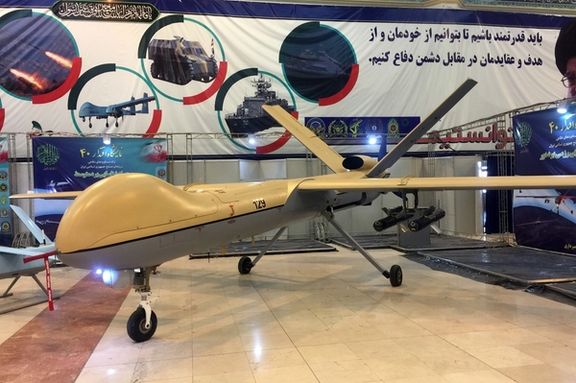
‘Countries with unclear usage’
While Rotax engines are used in snowmobiles, watercraft and civilian airlines, they also figure in the United States MQ-1 Predator drone, Israel’s Heron drones, and some Russian drones. Drone output has surged in the Middle East in recent years, with the main producers Israel and Turkey.
In 2020, it emerged that Rotax engines were being used in Turkish Bayraktar TB2 drones being used by Azerbaijani forces against Armenia – which led the company to say it would stop exports of Rotax 912 engines to “countries with unclear usage.” The manufacturer has claimed Ukraine’s use of the Bayraktar would boost worldwide sales.
Iran has developed a program of drones, or UAVs (unmanned aerial vehicles), given it lacks an effective air force due to international sanctions. While Iranian officials and commanders have celebrated this as an achievement of domestic production, Iran has copied when advantageous.
Iran’s Shahed-129 drone, in production since 2013, has been widely reported to have a Rotax 914 engine. A decade ago, there were reports that had Iran copied aspects of a US drone it had shot down.

Tehran has developed skills in obtaining technology when barred by sanctions. “Exporters will look at the request coming from the [United Arab Emirates] or another third country…when really the end user is in Iran,” Daniel Salisbury, a senior research fellow with the Department of War Studies at King’s College London, recently told RFE.
Cost-effective alternative
While Ukraine has in the current conflict used both Turkish and US drones, as well as making its own, Russian military commanders have generally been skeptical over the usefulness of drones.
Russia’s Forpost, a surveillance drone that is a licensed version of the Israeli IAI Searcher II, has been deployed in Ukraine, but Moscow has faced problems with its stealth drones. Ukraine has argued that Iranian drones are a cost-effective alternative to missiles while Kyiv has also used Tehran’s supply to lobby successfully for better US air defenses.
After conceding Saturday that it had supplied drones to Russia, albeit before the current phase of conflict and specifically for use in Ukraine, Iran continues to stress both its links with Moscow and desire for a negotiated peace.
After meeting with Russian Security Council Secretary Nikolai Patrushev in Tehran Wednesday, Iran’s top security official Ali Shamkhani called for deeper ties in energy, transport and banking. He said they had discussed resisting “western interference” in internal affairs and that Iran would back “any initiative that leads to a ceasefire.”

Iran’s intelligence minister has implicitly threatened the UK of terrorist operations after the country decried attempted menacing acts against two London-based Iran International journalists.
In an interview with the official website of the Supreme Leader, published on Wednesday, Esmail Khatib said the Islamic Republic recognizes Iran International as “a terrorist organization,” adding that its workers and anyone affiliated with the channel will be pursued by the Ministry of Intelligence.
In a statement on Monday, Volant Media -- the parent company of Iran International – said that two of their journalists have recently been notified of the threats. “The Metropolitan Police have now formally notified both journalists that these threats represent an imminent, credible and significant risk to their lives and those of their families. Other members of our staff have also been informed directly by the Metropolitan Police of separate threats," read the statement.
Khatib did not explicitly state that the Islamic Republic will carry out attacks in the UK but said it “would not commit itself to countering insecurities," emanating from other countries.
"We will never sponsor acts of terrorism and insecurity in other countries, as Britain does, but we also have no obligation to prevent insecurity in those countries either. Therefore, Britain will pay for its actions aimed at making Iran insecure," the minister warned.
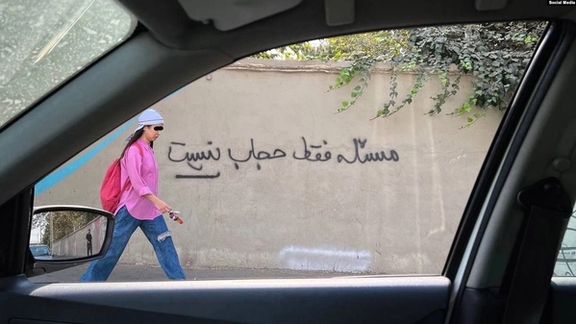
Echoing remarks by the Supreme Leader and other officials, he blamed the UK, US, Israel and Saudi Arabia for the current wave of protests across Iran – ignited by the death in custody of a 22-year-old Kurdish woman, Mahsa Amini.
He claimed that a “hybrid war” has been launched against the Islamic Republic, including an “influence operation” to destabilize the country, adding that the role of Israel was more obvious in field operations while UK’s role was more in terms of propaganda. He added that Saudi Arabia provided financial support for the operations against the Islamic Republic, especially for protests abroad, such as a huge demonstration in Berlin last month. The huge rally of diaspora Iranians in the German capital in October angered the government in Tehran which tried to belittle the opposition gathering.
“Unfortunately, the British government, which supports the BBC and Iran International satellite channels that operate within its media framework, has taken on a terrorist role today,” he said, calling it “crossing the security red lines of the Islamic Republic.”
His remarks came after the threat was discussed during a Tuesday meeting of the British House of Commons on whether to designate Iran’s Revolutionary Guard as a terrorist organization.
"British-Iranian reporters who are now sited in the UK have been issued with credible information by the police that the Islamic Revolutionary Guard Corps threatens their lives. What more does IRGC have to do before we proscribe them in their entirety?" Conservative British MP Bob Blackman said at the meeting.

Later on Tuesday, the Committee to Protect Journalists asked British authorities to strengthen their protection of threatened staff members of Iran International, demanding that they hold the Islamic Republic accountable for its transnational crimes.
“Time and again Iranian authorities have acted with impunity in attempting to silence journalists around the world,” said Sherif Mansour, CPJ’s Middle East and North Africa program coordinator.
“UK authorities must ensure the safety of Iran International’s staff and send a message that threats to journalists on its soil will not be tolerated. Until foreign governments hold Iran accountable, this trend will only worsen, and journalists will continue to face unacceptable threats to their safety.”
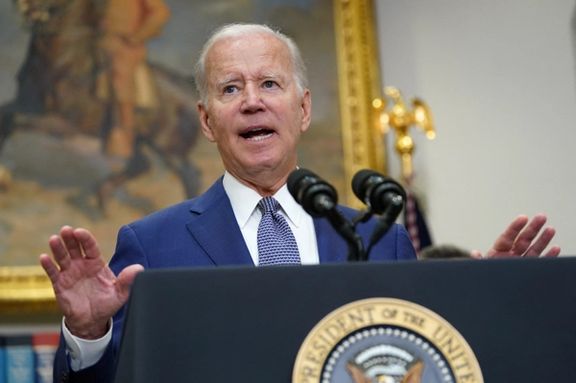
US President Joe Biden has extended the state of emergency regarding Iran for another year, which would keep US sanctions imposed following the 1979 hostage crisis still in effect.
Joe Biden renewed the emergency with respect to Iran, pursuant to the International Emergency Economic Powers Act.
Biden said on Tuesday that “Our relations with Iran have not yet normalized, and the process of implementing the agreements with Iran, dated January 19, 1981, is ongoing. Biden said in a statement published on the White House website, “For this reason, the national emergency declared on November 14, 1979, and the measures adopted on that date to deal with that emergency, must continue in effect beyond November 14, 2022.”
The national emergency was announced when radical students in Tehran seized the US embassy and took hostage dozens of diplomats, staff and guards.
The decision by then-president Jimmy Carter was meant “to deal with the unusual and extraordinary threat to the national security, foreign policy, and economy of the United States constituted by the situation in Iran.”
The extension of the state of emergency in relation to Iran comes at a time when negotiations to revive the 2015 nuclear agreement have stalled, with the White House saying it is no longer focused on that.
The suppression of the current antigovernment protests in Iran as well as regime’s deployment of drones to Russia to be used in Ukraine war have also triggered a new wave of sanctions against the Islamic Republic.
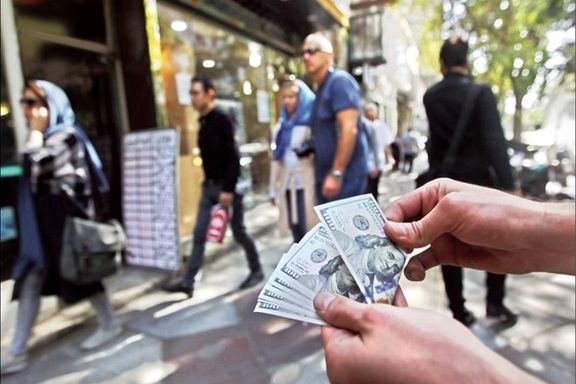
Iran’s national currency has lost 16% of its value during the past week, as the government prepares to submit next year’s budget bill to the parliament soon.
Iranian government’s annual budgets have faced annual deficits of at least 30 percent since 2019, when the United States imposed sanctions on the country. During this time, the government had to borrow more heavily from domestic banks, especially the Central Bank, and other financial entities to fill the budget gap.
Another major government revenue source is profits it makes when the rial loses value against major currencies, enabling the government to sell its foreign currencies at higher prices in open markets and pay salaries and other obligations.
According to the International Monetary Fund’s latest report, released on October 31, thanks to higher oil exports and prices, Iran’s total exports is expected to increase by 41% year-on-year to above $121 billion in 2022. For comparison, the figure was only $54 billion in 2020.
Of course, this figure is an estimate, since official information about how much oil Iran exports and how much foreign currency it actually receives remain state secrets, due to US sanctions.
On the other hand, Iran’s trade turnover balance is expected to stand at plus $35 billion this year, or three times more than in 2021. This value is equal to 81% of Iranian government’s budget, based on the current USD rate in Iran (1USD:367,500 rials).
The Iranian rial has lost about 47% of its value since July 2021, when the new government, headed by Ebrahim Raisi took office.

Regarding the fact that Iranian government’s oil exports during the current fiscal year (started March 21) is estimated to be above 1 million barrels per day (mb/d) or 40% more than last year, with higher global oil prices, its revenues have increased significantly.
Therefore, the government should have enough foreign currency reserves to prevent the de facto devaluation of the rial.
Iran’s oil exports had dropped to around 200,000 barrels a day in 2019-2020 during the Trump Administration which was hawkish in sanctions enforcement. As soon as Joe Biden was elected president, Iran began shipping more oil to China and the daily exports quadrupled by 2022.
Figures published by the central bank show government borrowing from this bank has not increased since July 2021, despite concerns by economists that more money needs to be printed to finance government operations.
However, central bank figures also show that liquidity has increased by 12% during this period, a fact that indicates the government continues printing money in huge amounts, most probably due to selling of foreign currencies at higher rates to the banks and exchange markets.
IMF predicted that Iran’s broad money growth to stand at 47.5% in 2022, 8.5% more than 2021.
This leaves many questions unanswered. If Iran has tripled its exports in two years, why the currency is falling and why It has such high budget deficits. Just this week, the government announced that Supreme Leader Ali Khamenei has authorized the use of more foreign currency reserves to bridge the deficit.
A Supreme Accounting Office report covering the period March 21- May 20 showed in July that except tax revenues, all other major sources of income grossly underperformed.
The government realized just 37 percent of the projected budget revenues in this period, but the most notable number in the report was how little oil income was collected. While 79 percent of tax revenues were realized, only 15 percent of oil export income entered government coffers. While barter of oil for goods is one possible explanation, rosy predictions about cash in government pockets might be misleading.
This remains another unanswered question, that outsiders like the IMF may never be able to figure out.